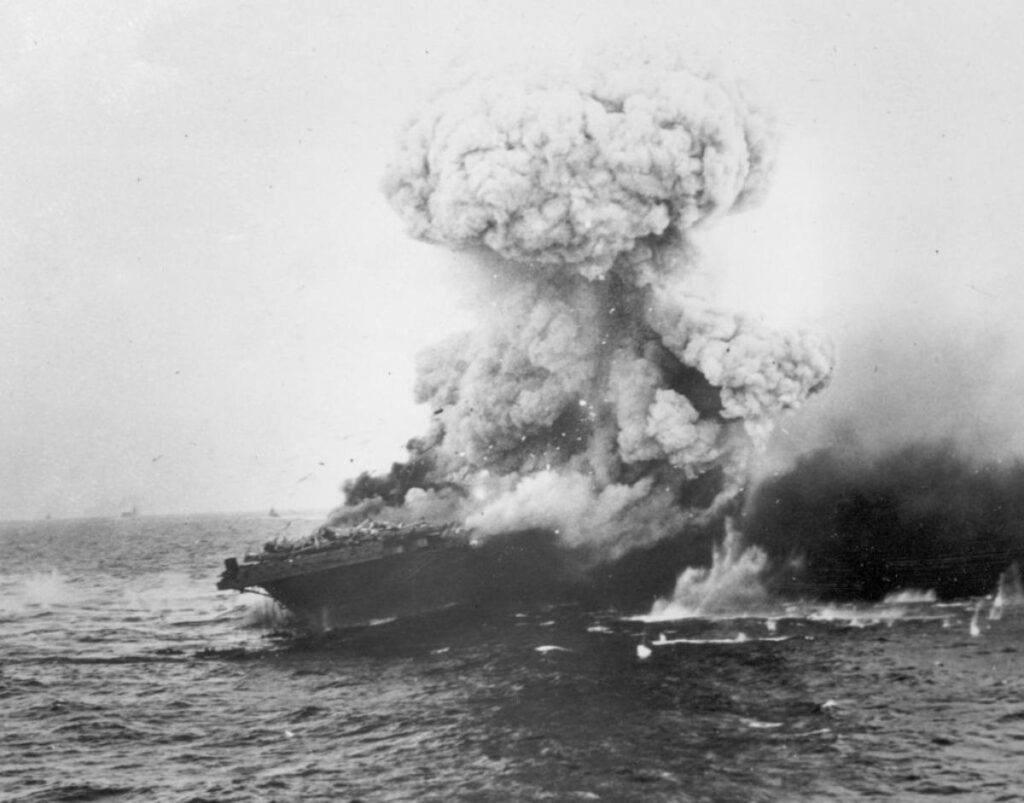In the vast expanse of the Pacific Ocean during World War II, a pivotal naval engagement known as the Battle of the Coral Sea took place. This monumental clash between American and Japanese forces in May 1942 would mark a notable turning point in the Pacific War, shaping the course of history in the region. As ships clashed and planes soared through the skies, the Battle of the Coral Sea would leave an indelible mark on the war and the world at large. join us as we delve into the complexities and impact of this historic battle that altered the course of the Pacific theater.
The Strategic Significance of the Battle of the Coral Sea
The Battle of the Coral Sea was a significant turning point in the Pacific War, with far-reaching consequences that would shape the course of the conflict. This pivotal naval engagement, fought between the Allied forces and the Imperial Japanese Navy in may 1942, marked the first time in history that opposing fleets engaged in combat without their ships making direct visual contact. the battle, though technically a draw, had strategic implications that altered the balance of power in the Pacific theater.
Key takeaways from the Battle of the Coral Sea:
- The battle halted the Japanese advance towards australia, preventing a potential invasion of the continent.
- It highlighted the importance of aircraft carriers in modern naval warfare, as both sides relied heavily on carrier-based aircraft during the engagement.
- The loss of ships on both sides, including the carrier USS Lexington and Japanese carrier Shokaku, weakened the respective naval forces and shifted the dynamics of the conflict.
The Role of Intelligence and Communication in the Battle
Intelligence and communication played crucial roles in the Battle of the Coral Sea, a pivotal moment in shaping the outcome of the Pacific War.By gathering and analyzing intelligence on enemy movements, the Allied forces were able to anticipate the Japanese Navy’s plans and strategically position their own fleet for maximum effectiveness. This allowed them to effectively communicate their strategies and coordinate their efforts,ultimately leading to a successful defense against the japanese forces.
In the heat of battle, clear and concise communication among Allied commanders and troops was essential for making split-second decisions that could mean the difference between victory and defeat. From radio transmissions to visual signals, effective communication channels were instrumental in ensuring that orders were understood and executed swiftly. The ability to relay data accurately and efficiently enabled the Allied forces to outmaneuver the Japanese Navy and emerge victorious in a battle that would have lasting implications on the course of the war in the Pacific.
Lessons learned from the Battle of the Coral Sea
The Battle of the Coral Sea was a pivotal moment in the Pacific War, showcasing the power of naval aviation and forever changing the course of history. This fierce battle between the United States and Japanese forces taught us valuable lessons that continue to shape military strategies today.
Some key takeaways from the Battle of the Coral Sea include:
- The importance of carrier-based aircraft: The battle highlighted the crucial role that aircraft carriers play in modern warfare, demonstrating their effectiveness in projecting power over vast distances.
- The value of intelligence gathering: Both sides relied heavily on intelligence to anticipate enemy movements and plan their own strategies, underscoring the significance of accurate and timely information in military operations.
- The significance of joint operations: The cooperation between air, naval, and ground forces during the battle emphasized the need for integrated military operations in achieving success on the battlefield.
The Impact of the Battle on the Outcome of World War II in the Pacific Region
The Battle of the Coral Sea was a pivotal moment in the Pacific War during World War II,with far-reaching impacts on the outcome of the conflict in the region. This naval battle, fought between the Allies and the Japanese Imperial Navy in May 1942, marked the first time in history that two opposing fleets engaged in combat without sighting each other.
The Battle of the Coral Sea had significant consequences that shaped the Pacific War, including:
- Halting Japanese Expansion: The battle prevented the Japanese from further advancing into the Pacific and served as a strategic turning point in the war.
- Protecting Australia: The Allied victory at Coral Sea safeguarded Australia from potential invasion by Japanese forces, maintaining a crucial stronghold in the region.
Key Takeaways
As we reflect on the significance of the Battle of the Coral Sea, it becomes clear that this pivotal moment in history played a crucial role in shaping the course of the Pacific War. The courage and sacrifices made by those who fought in this fierce battle will never be forgotten. Through strategic maneuvering and bold tactics, the Allied forces managed to halt the Japanese advance and set the stage for future victories in the Pacific. The Battle of the Coral Sea stands as a testament to the resilience and determination of those who fought in the face of adversity. It serves as a reminder of the bravery and resolve that ultimately led to the turning tide of the war.
